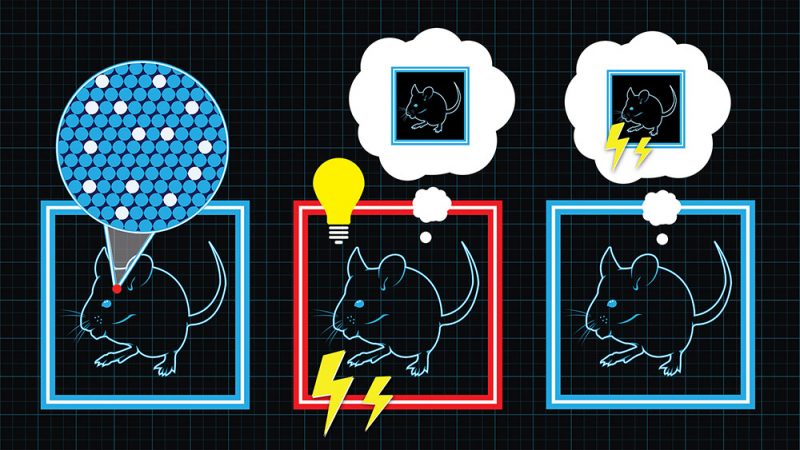Fake memories
A flash of light in the brain plants false memories

A little light in just the right spot: That’s all it takes to get a mouse to remember something that never happened. The spot that needs to be “enlightened” lies deep inside the brain. It’s within a seahorse-shaped region called the hippocampus. By tweaking cells here, scientists have created fake memories — in mice.
Errors frequently plague our memories. The new study shows not only that memory can be unreliable but also that memories can be deliberately altered, at least in the lab.
“It’s fairly astounding,” Mark Mayford told Science News. Mayford, who studies the brain and nervous system at the Scripps Research Institute in La Jolla, Calif., was not involved in the new tests. He says the new study shows that stimulating “a small amount of cells can put a thought into an animal’s head.”
Scientists want to know how memories form and falter. To find out, neuroscientist Susumu Tonegawa and his coworkers went straight to the hippocampus. It’s known to play a role in making memories. The researchers were looking for traces of memory stored in brain cells. Scientists refer to these traces as engrams. Understanding how those cells work — or misfire — is difficult without studying them in animals, Tonegawa told Science News. He is a neuroscientist at the Massachusetts Institute of Technology in Cambridge.
To explore memories, his team added genes to memory-making cells in a mouse’s hippocampus. Proteins are the molecules that keep a cell working correctly. And genes are the instructions that tell cells which proteins to make. The bonus genes that Tonegawa’s team added tell certain brain cells in mice to make a new protein — one that is sensitive to light. The team also added a chemical “tag” to the affected cells; it would help identify those cells later.
Now, when a treated mouse made a memory, affected brain cells also started making the new, light-sensitive protein. The scientists could find these memory cells by shining a light (from a tiny optical fiber embedded in the mouse’s brain). Only cells with the new protein would respond to the light, becoming active. This use of light to study genes is known as optogenetics.
In one experiment, mice explored a new room. As they created memories of this experience, the special protein tagged those memory cells. The next day, the mice explored a different room. After a while, mice exploring it received a small shock to their feet.
At the same time the mice received that shock, the scientists shined a light through the optical fibers. This flash lit hippocampus cells holding a memory of the first room. The light triggered the memory cells to activate another nerve cell. And it transported information.
The next day, each mouse returned to the first room. And immediately it froze; it seemed terrified. Even though none of the mice had ever received a shock here, the animals wanted nothing to do with this room. This showed that the light flash had altered their memory of that room. The scientists concluded that they had successfully planted a false memory of being shocked there.
Tonegawa told Science News that about 30,000 cells were involved in making the memories. That may seem like a large number, but the hippocampus contains millions of cells.
“It is really surprising that these things can be done by stimulating this relatively small amount of cells,” he said.
The study may help scientists better understand how memory fails. But Tonegawa notes that understanding what will happen in people is not as simple as looking for the same cells in them. He notes that memory-making is probably more complex in people than in mice.
Power Words
optogenetics A technique that uses light to better understand genes and cells in the nervous system, especially the brain.
neuroscience Science that deals with the structure or function of the brain and other parts of the nervous system.
hippocampus A seahorse-shaped region of the brain. It is thought to be the center of emotion and memory.
neuron A specialized cell that transmits information to other neurons in the form of electrical signals.







